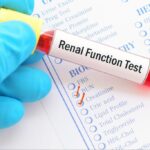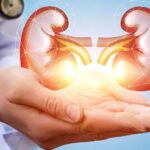Varicose veins are frequently associated with women. However, it’s a misconception that this condition is exclusive to them. Men can and do suffer from varicose veins, so understanding the facts is essential.
While it might be less talked about in men’s health circles, it’s a surprisingly common issue that can cause discomfort and, in some cases, lead to more serious health problems.
How Common Are Varicose Veins in Men?
While it’s true that varicose veins are more prevalent in women, men are far from immune. Statistics show that around 25% of all people with varicose veins are men.
This number increases significantly with age; over 40% of men over 70 are estimated to develop them. Additionally, about 10% of men experience varicoceles, which are varicose veins, specifically in the scrotum.
What Factors Increase the Risk?
Age plays a significant role, as the valves in veins naturally weaken over time, increasing susceptibility to malfunction. While exercise is generally healthy, intense physical activity and hefty lifting can place extra strain on veins.
Medical and family history are also important considerations, as a family history of varicose veins increases individual risk, and certain underlying medical conditions can be contributing factors.
Excess weight puts additional pressure on the veins, especially in the legs, making them more prone to becoming varicose. Finally, diet plays a role, as a diet lacking fibre and essential vitamins can weaken vein walls, making them more vulnerable.
Where Do Varicose Veins Appear in Men?
Unsurprisingly, the legs are men’s most common location for varicose veins. The veins in the legs, particularly in the calves, ankles, and thighs, bear the brunt of gravity and are, therefore, most susceptible. However, varicose veins can develop anywhere there’s venous insufficiency, including the torso and arms.
How to Recognize Varicose Veins
Varicose veins typically appear in common problem areas like the calves, thighs, ankles, or scrotum. They are visually distinct, appearing as significant, twisted, bulging dark blue or purple veins.
In addition to their appearance, varicose veins can cause discomfort such as pain, swelling, itching, or burning in the affected area, as well as muscle fatigue or a feeling of heaviness in the legs.
Preventing Varicose Veins
Preventing varicose veins centres around minimizing vein stress and maintaining a healthy lifestyle. This includes regular low-impact exercises like swimming, cycling, walking, and leg and core strengthening exercises.
You try to elevate the legs above heart level whenever possible, which helps reduce blood pooling and improve circulation. Finally, a fibre-rich diet and vitamins C, D, and E strengthen veins.
The Importance of Treatment
If left untreated, varicose veins can progress and lead to more serious complications. In mild cases, you might only experience cosmetic concerns and some discomfort. However, more severe cases can lead to conditions like deep vein thrombosis (DVT), a potentially life threatening blood clot.
Varicoceles, if left untreated, can even contribute to infertility by impacting sperm production and testosterone levels.
Treatment Options for Men
Modern medicine provides several minimally invasive treatments for varicose veins, including endovenous laser ablation (using heat to seal the vein), radiofrequency ablation (using radiofrequency energy to close the vein), sclerotherapy (injecting a solution to collapse and fade the vein), and ClariVein (a procedure combining mechanical and chemical methods).
In conclusion, although varicose veins are often thought of as something only women deal with, men face this problem, too. The risk factors, the symptoms you must look out for, and prevention are all critical factors in maintaining vein health. If you think you have varicose veins, talking to a healthcare professional to explain what treatment would be best for you is essential




